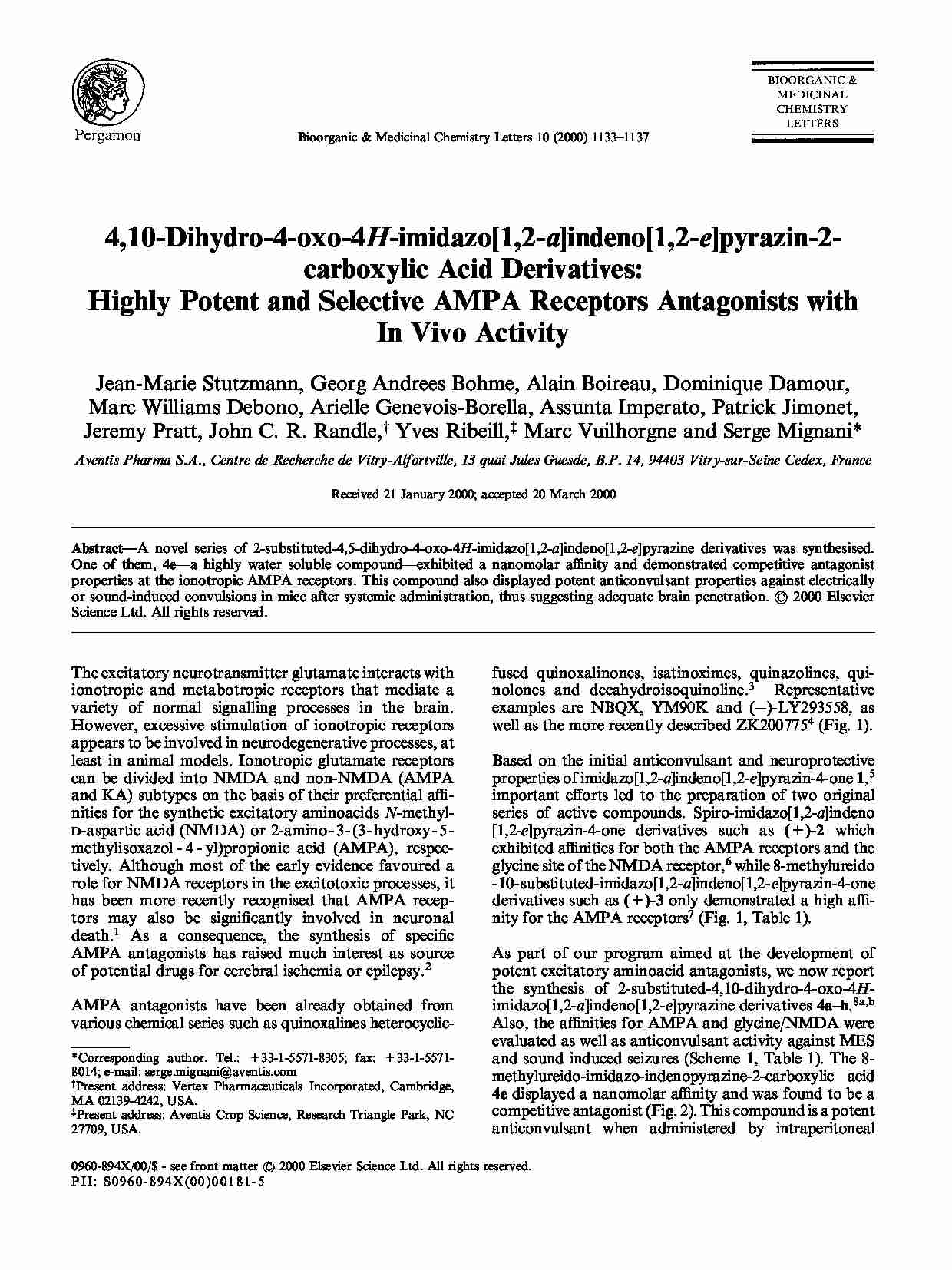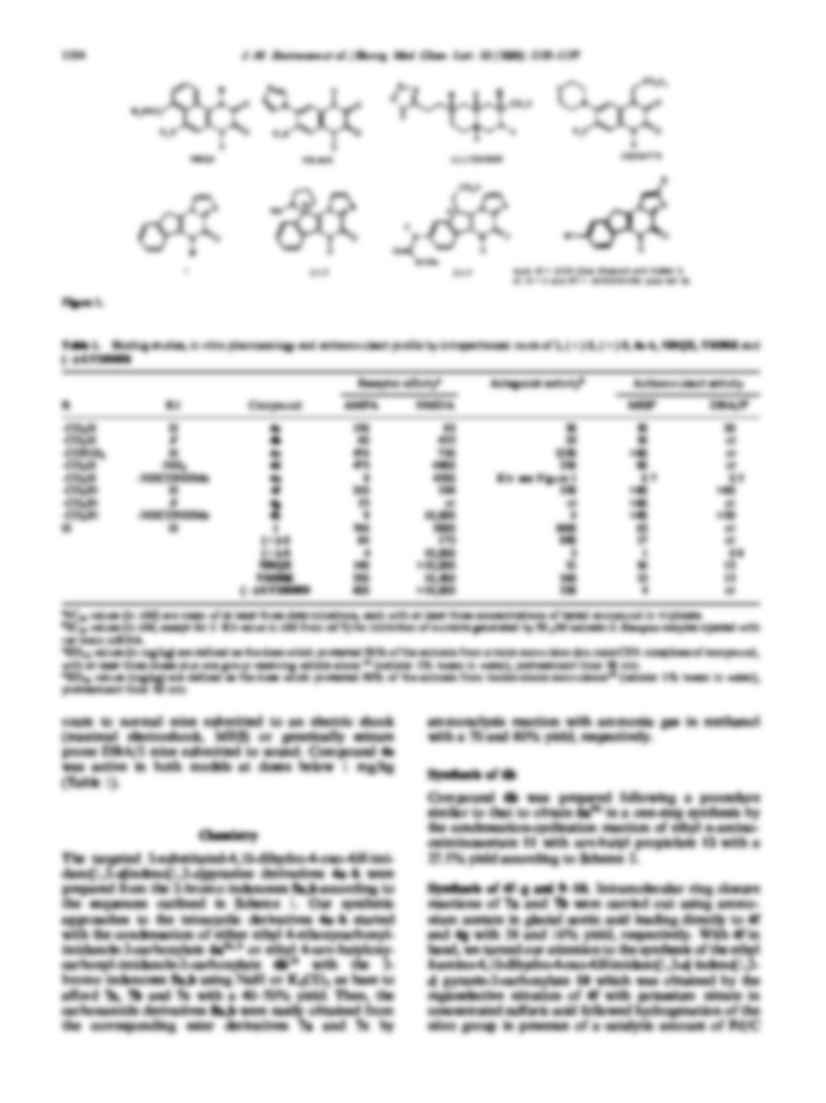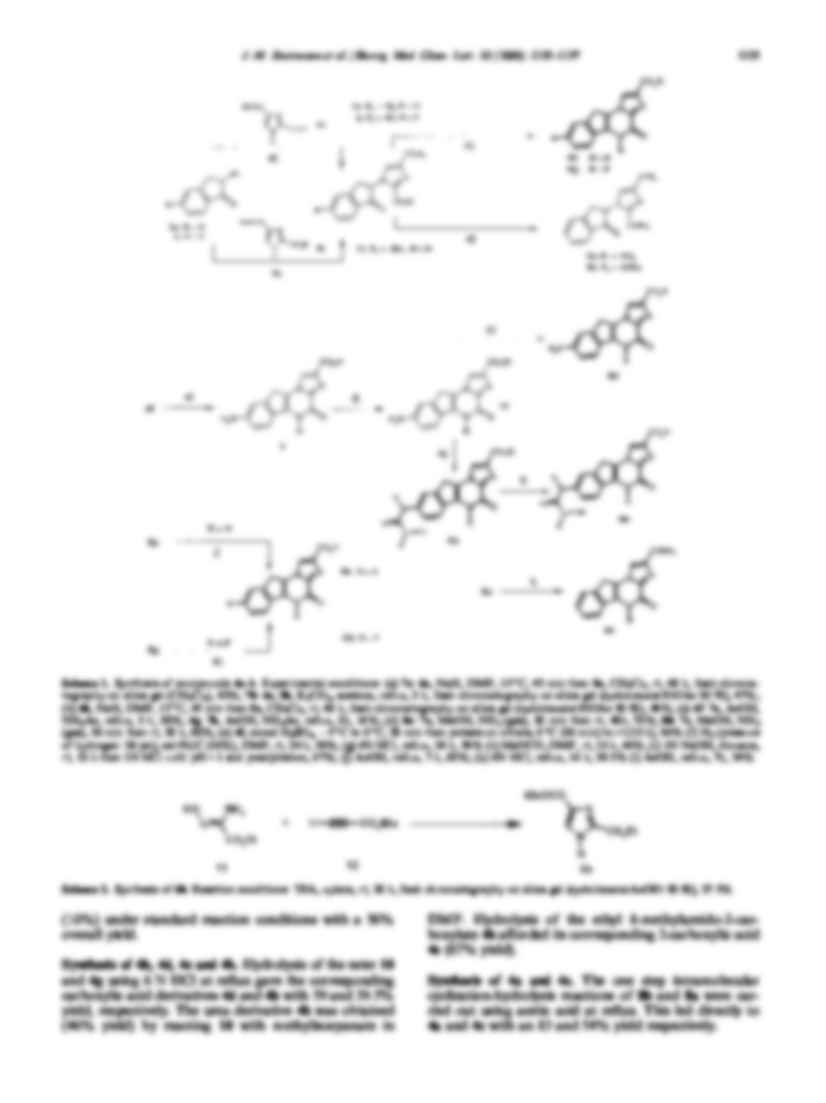Bioorganic & Medicinal Chemistry Letters 10 (2000) 1133±1137
4,10-Dihydro-4-oxo-4H-imidazo[1,2-a]indeno[1,2-e]pyrazin-2carboxylic Acid Derivatives:
Highly Potent and Selective AMPA Receptors Antagonists with
In Vivo Activity
Jean-Marie Stutzmann, Georg Andrees Bohme, Alain Boireau, Dominique Damour,
Marc Williams Debono, Arielle Genevois-Borella, Assunta Imperato, Patrick Jimonet,
Jeremy Pratt, John C. R. Randle,y Yves Ribeill,{ Marc Vuilhorgne and Serge Mignani*
Aventis Pharma S.A., Centre de Recherche de Vitry-Alfortville, 13 quai Jules Guesde, B.P. 14, 94403 Vitry-sur-Seine Cedex, France
Received 21 January 2000; accepted 20 March 2000
AbstractÐA novel series of 2-substituted-4,5-dihydro-4-oxo-4H-imidazo[1,2-a]indeno[1,2-e]pyrazine derivatives was synthesised.
One of them, 4eÐa highly water soluble compoundÐexhibited a nanomolar anity and demonstrated competitive antagonist
properties at the ionotropic AMPA receptors. This compound also displayed potent anticonvulsant properties against electrically
or sound-induced convulsions in mice after systemic administration, thus suggesting adequate brain penetration. # 2000 Elsevier
Science Ltd. All rights reserved.
The excitatory neurotransmitter glutamate interacts with
ionotropic and metabotropic receptors that mediate a
variety of normal signalling processes in the brain.
However, excessive stimulation of ionotropic receptors
appears to be involved in neurodegenerative processes, at
least in animal models. Ionotropic glutamate receptors
can be divided into NMDA and non-NMDA (AMPA
and KA) subtypes on the basis of their preferential anities for the synthetic excitatory aminoacids N-methyld-aspartic acid (NMDA) or 2-amino -3- (3-hydroxy -5 methylisoxazol - 4 - yl)propionic acid (AMPA), respectively. Although most of the early evidence favoured a
role for NMDA receptors in the excitotoxic processes, it
has been more recently recognised that AMPA receptors may also be signi®cantly involved in neuronal
death.1 As a consequence, the synthesis of speci®c
AMPA antagonists has raised much interest as source
of potential drugs for cerebral ischemia or epilepsy.2
AMPA antagonists have been already obtained from
various chemical series such as quinoxalines heterocyclic*Corresponding author. Tel.: +33-1-5571-8305; fax: +33-1-55718014; e-mail: serge.mignani@aventis.com
y
Present address: Vertex Pharmaceuticals Incorporated, Cambridge,
MA 02139-4242, USA.
{
Present address: Aventis Crop Science, Research Triangle Park, NC
27709, USA.
fused quinoxalinones, isatinoximes, quinazolines, quinolones and decahydroisoquinoline.3 Representative
examples are NBQX, YM90K and (À)-LY293558, as
well as the more recently described ZK2007754 (Fig. 1).
Based on the initial anticonvulsant and neuroprotective
properties of imidazo[1,2-a]indeno[1,2-e]pyrazin-4-one 1,5
important eorts led to the preparation of two original
series of active compounds. Spiro-imidazo[1,2-a]indeno
[1,2-e]pyrazin-4-one derivatives such as (+)-2
... zobacz całą notatkę






Komentarze użytkowników (0)